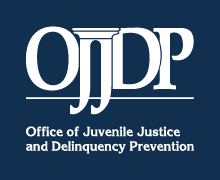Deviance
Mental Health: The Influence of Mental Health on Juvenile Justice System Involvement
Status Offenses
A status offense is a nondelinquent (and noncriminal) act that is illegal for underage individuals (usually age 17 or younger), but not for adults. There are five main types of status offenses: 1) truancy, 2) running away from home, 3) violating curfew, 4) violating underage liquor laws, and 5) ungovernability. Tobacco offenses and a variety of other acts may also be regarded as status offenses...
Children's Advocacy Centers
Administrator
Acting Administrator Eileen M. Garry
Youth Curfews
Youth curfews are an example of a local policy response to crime and delinquency committed by youths or to an increase in incidents of victimization of youths. While the requirements and restrictions vary by time, place, and age (Hazen and Brank, 2018), the general concept is that keeping youths at home during the late-night to early morning hours will limit their opportunities to commit or...
Alternatives to Detention and Confinement
Gun Violence and Youth/Young Adults
Age Boundaries of the Juvenile Justice System
The juvenile justice system has evolved though four periods since the juvenile courts’ creation more than a century ago: the Progressive Era (1899–1960s), the Due-Process Era (1960s and 1970s), the Get-Tough-on-Crime Era (1980s and 1990s), and the contemporary reaffirmation of the Kids-Are-Different Era (2005 to the present) [Luna, 2017; National Research Council, 2013]. The juvenile justice system evolved to hold youths who offend accountable for...
Protecting Against Adversity: The Role of Positive Childhood Experiences in Youth Recidivism
Bullying and Cyberbullying
Bullying involving children and youth has become a topic of national conversation over the past few decades and is a major focus for schools across the United States and internationally (Gladden et al., 2014; Ybarra et al., 2019). Bullying can cause substantial harm to the children and youth who are victimized, to those who engage in bullying behaviors, and to the bystanders who witness bullying...
Literature Review: Community-Oriented Policing and Problem-Oriented Policing
In 1979, Hermon Goldstein observed from several studies conducted at the time on standard policing practices that law enforcement agencies seemed to be more concerned about the means rather than the goals of policing. He argued that law enforcement agencies should shift away from the traditional, standard model of policing and that police become more proactive, rather than reactive, in their approaches to crime and...
Generality of Deviance: Replication of a Structural Model Among High-Risk Youth
Gang Membership, Delinquent Peers, and Delinquent Behavior
Tribal Youth Programs and Services
Overview
OJJDP's Tribal Youth Programs and Services helps Tribal communities prevent victimization and juvenile delinquency, reduce violent crime, and improve Tribal juvenile justice systems.
Tribal ConsultationLearn more about the Tribal Consultation:
|
Programs and Funding
Between fiscal years 2017 and 2023, OJJDP awarded over $88.3 million...
Internet Crimes Against Children Task Force Program
Overview
The Internet Crimes Against Children Task Force program (ICAC) helps state and local law enforcement agencies develop an effective response to technology-facilitated child sexual exploitation and Internet crimes against children. This assistance encompasses forensic and investigative components, training and technical assistance, victim services, and community education.
The ICAC Task Force program was developed...
Formula Grants Program
Overview
The Formula Grants Program is authorized under the JJDP Act of 1974, as amended.
OJJDP's Formula Grants Program supports state and local delinquency prevention and intervention efforts, and juvenile justice systems improvements. Within the program purpose areas, states can provide job training, mental health and substance use treatment, community-based programs and...
Children Exposed to Violence
Overview
Children are exposed to violence every day in their homes, schools, and communities. Such exposure can cause them significant physical, mental, and emotional harm with long-term effects that can last well into adulthood. Exposure to violence can limit children's potential and increase their likelihood of becoming involved in the juvenile or criminal justice system. These children are often more...
Core Requirements Training for States
Training Overview
In November 2018, the Office of Juvenile Justice and Delinquency Prevention (OJJDP) hosted a training for state representatives in Baltimore, MD. Attendees included compliance monitors, disproportionate minority contact coordinators, juvenile justice specialists, and state advisory group members serving in one of those positions.
The 4-day training provided participants with an overview of the Juvenile Justice and Delinquency Prevention (JJDP) Act, updates on...
JUVJUST
OJJDP's JUVJUST news services provides information on OJJDP and OJJDP-supported publications, funding opportunities, events, and more to subscribers. OJJDP will consider requests from other federal agencies to release information through the JUVJUST news service on a case-by-case basis. Subscribe to JUVJUST announcements.
U.S. Virgin Islands
Review the following information to access contacts, funding information, state plans, performance measures, and more.
Juvenile Justice Specialist, Compliance Monitor, and R/ED Coordinator
Jacqueline Freeman
Grants Manager
8000 Nisky Center, Suite 720B
St. Thomas, VI 00802-5858
340-774-6400
[email protected]
State Planning Agency Director
Moleto A. Smith Jr.
Director
8000 Nisky Center, Suite 720B
St. Thomas, VI 00802-5858
340-774-6400 ext. 206
[email protected]
State...
Puerto Rico
Review the following information to access contacts, funding information, state plans, performance measures, and more.
Juvenile Justice Specialist and R/ED Coordinator
Natalia Ríos De Jesus
P.O. Box 7138
San Juan, PR 00936
787-273-6464
[email protected]
State Planning Agency Director
Francisco Antonio Quiñones Rivera, Esq.
Secretary
Puerto Rico Department of Corrections and Rehabilitation
P.O. Box 7138
San Juan, PR 00936
787-273-6464
[email protected]
Compliance Monitor...


